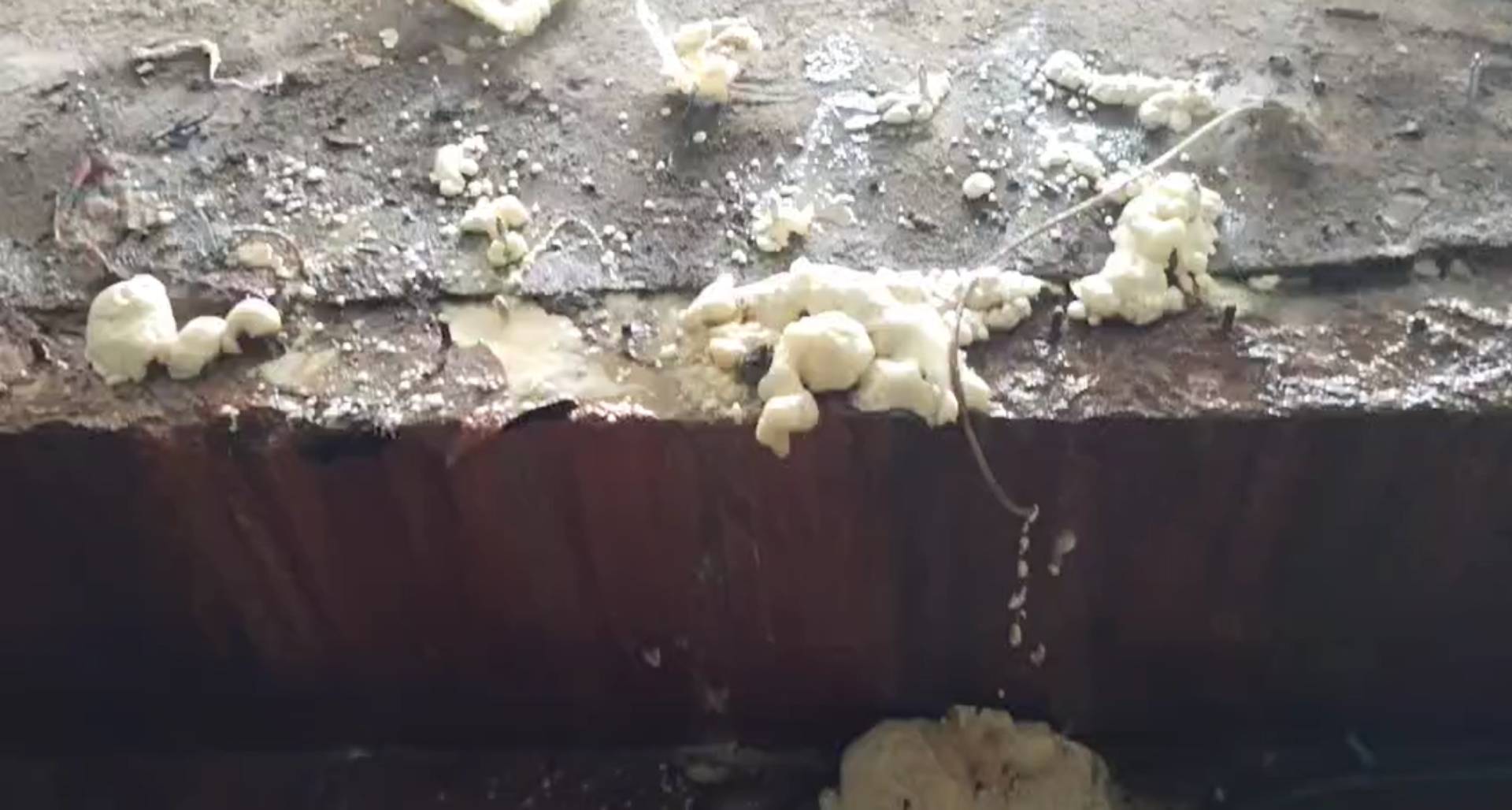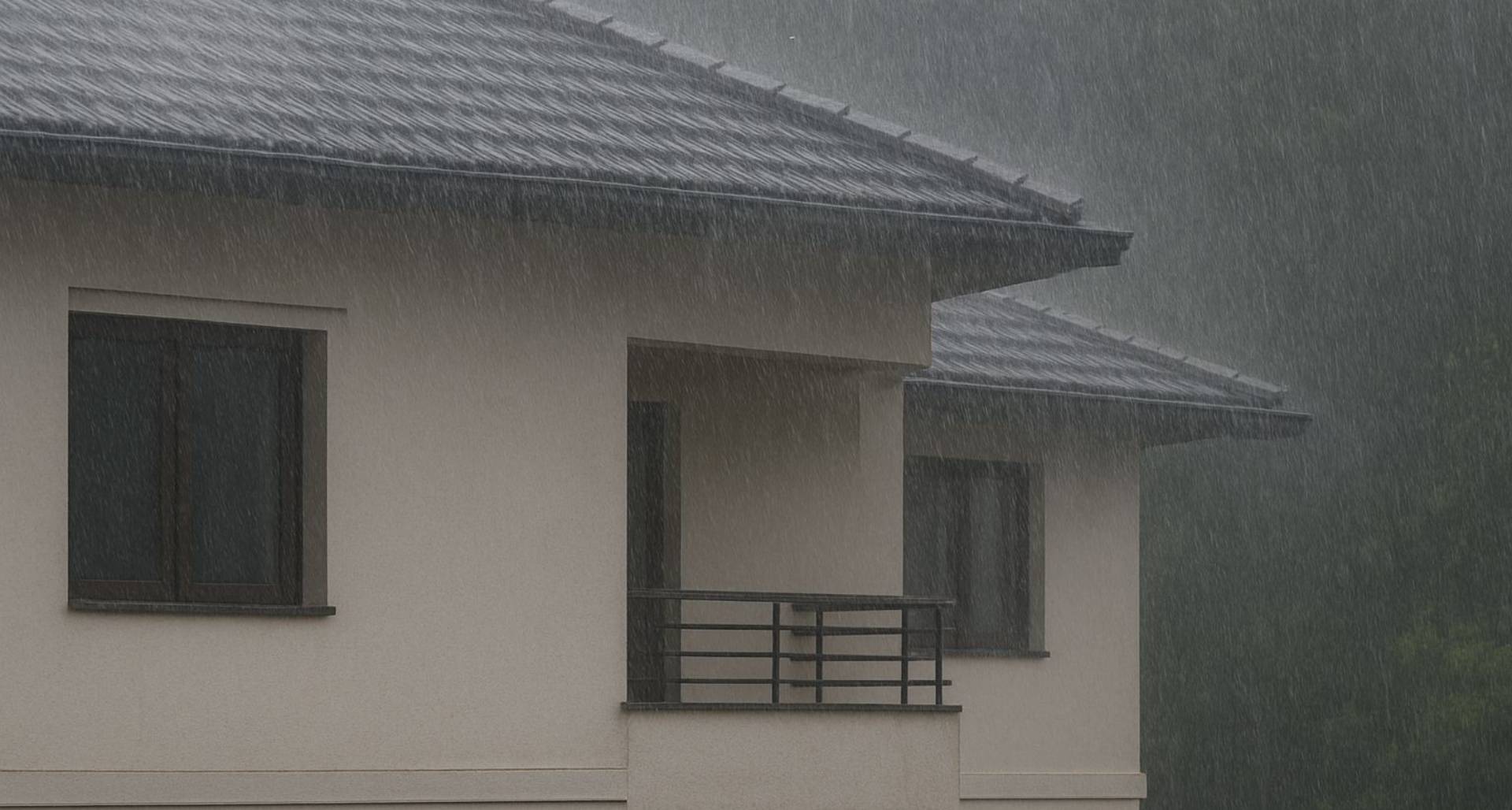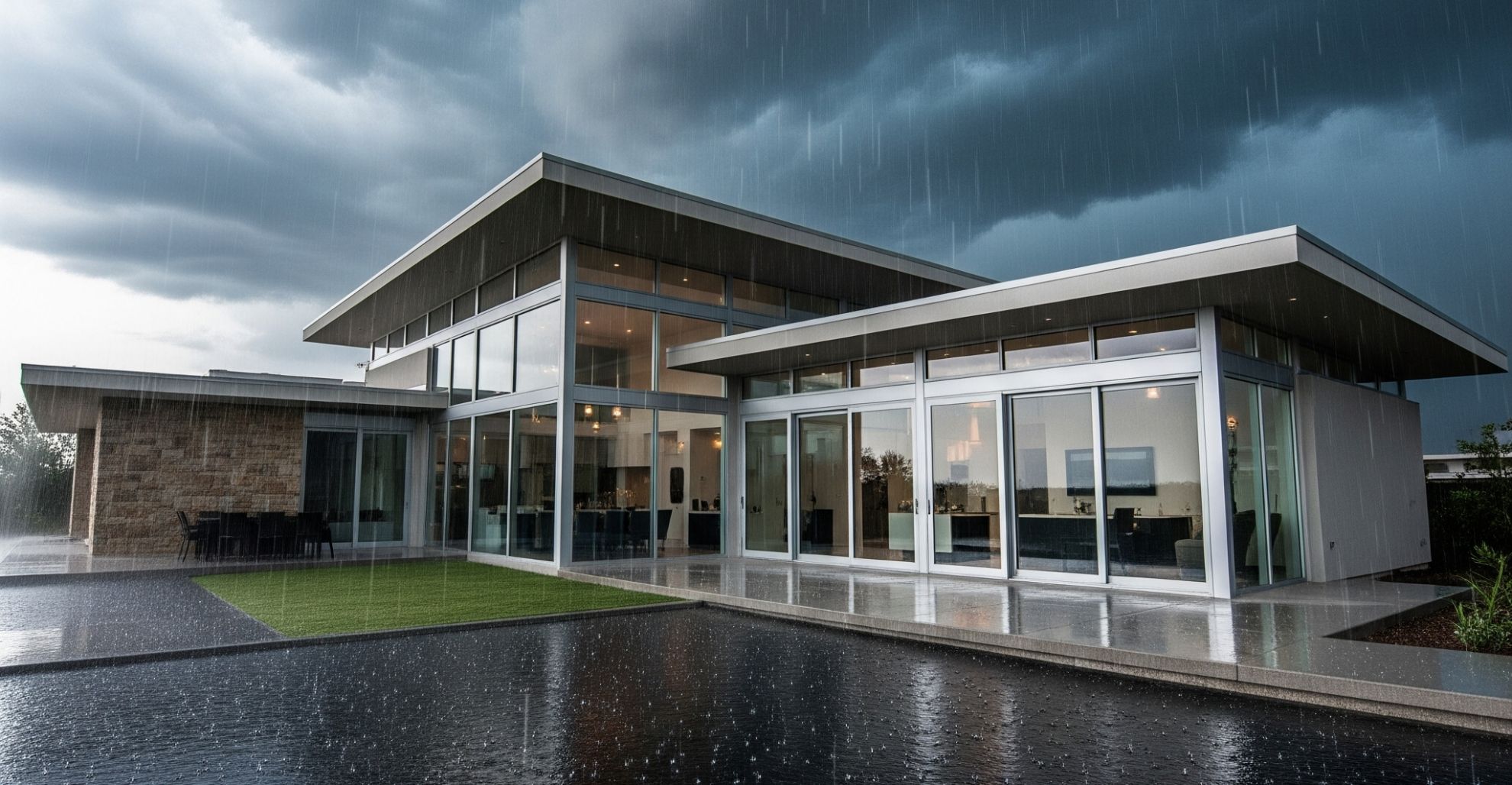A Step by Step Guide to Prevent Wall Dampness or Fix it
by Babu George
Originally published on January 25, 2023, 3:39 pm, updated on November 12, 2025
scroll downThe recent weather has been extreme, with rain and wind happening almost unexpected & constantly. Combined with the strong winds, this has resulted in our walls of home and office getting wet continuously. One of the most vulnerable parts of your home when it comes to weather damage is the external walls. External walls are unprotected from the weather, so if it rains hard outside, water can get inside if there is a minor crack somewhere and cause extensive damage. External wall waterproofing is a great way to protect your home from weather damage and keep your family and interiors safe.
Waterproofing your external walls is an important step in protecting your home from the effects of weathering and water damage. However, the question here is:
Is damp proofing your walls required at all?
The short answer is yes, but at least the walls which will get continuously wet like flush walls without a sunshade will be definitely a good idea. Waterproofing your walls can help to reduce water infiltration and also protect your home against water damage. In some cases, water infiltration can lead to mold and mildew growth. Additionally, water damage can cause significant structural damage to your home. Many homeowners decide to waterproof their exterior walls after seeing the benefits of energy savings and keeping their home from becoming a water magnet. However, many homeowners choose to skip the external wall waterproofing step and simply rely on the cladding and membrane on the wall to protect them from moisture and weather damage.
Wall damp protection systems for the external wall is one of the most important areas and yet most neglected part because a majority of individual home builders are not aware about it.
While this approach may work for a short period of time, it’s important to remember that weather and moisture will eventually penetrate the wall as cladding of tiles create small pockets which can become few miniature reservoirs on wall. This is where external wall waterproofing can come in handy.
Few reasons to have your walls dampproofed:-
-
To Protect Cement Plastering Cold Joints

Wall Plastering Cold Joints
Cement plastering of walls are not done at a stretch. Civil team will take breaks, or continue with an area, the next day. All these will cause to have plastering cold joints for your wall cement plaster. They crack due to weathering over time. They needs to be protected.
-
Protect Joints between Masonry and Beams/Slabs

Beam Masonry Joints
When brick walls are constructed, and when wall touches the slabs or beams, there is a space constraint to fill the residual area with a full brick. So typically, large quantity of cement mortar or brick pieces are used and they sag in no time. Due to unscientific filling, these areas tend to de-bond and resulting in cracks. These kind of issues can be addressed with wall damp proofing.
-
Bridge Hairline cracks.

Wall Hairline Cracks
Hairline cracks are a common phenomenon in any construction these days due to a plethora of reasons. If left unchecked, they widen and your interiors get damp in no time. A good wall damp proofing plan can mitigate these risks.
What is a good wall damp protection system?
External wall waterproofing or damp protection is a process of sealing the exterior wall with a waterproof membrane or a water-resistant coating/spraying. This will not only protect the wall from weather damage but it will also keep moisture and algae from growing on the wall.
Damages caused by wall dampness in our homes:
- Water leakage and moisture in walls can lead to building damage and collapse, if they are load bearing walls.
- Trapped water in difficult-to-reach areas can cause the growth of germs and bacteria which can affect our health. Not only that, it’s a threat to the occupants as mold & fungus deteriorate the room air quality and lead to breathing issues.
- Cause rotting of furniture, wall panels, wallpapers & cupboards.
- It can damage electrical appliances & short-circuiting of electrical devices.
- Causes rusting of reinforced steel.
- Swelling of composite wood & delamination of plywood.
Does painting alone fix dampness in walls?
- Paint film thickness is as low as 70 microns (1000 Micron [µ] is just 1mm!) and it also cracks eventually if a hairline crack appears.
- Water seeps in through these cracks and spread around by capillary action in all directions leading to discolouration, bubbling and flaking of paint. We can see this if you observe a 2 to 3-year-old building wall.
- During the day when it is hot, the crack widens due to thermal expansion and during the night mildew causes the widened crack moist or wet.
- The crack widens in this wet & dry cycle and widens further and finally bypasses the cement plastered thickness (typically a plastered wall is 13mm to 15mm) to reach the masonry. From there it’s a freeway for water, and it shows up in your interiors as dampness first, fungus next.
So the answer to the above question is obviously a no. Hence before painting, a solid wall waterproofing plan is a must. Read on to know more.
Watch Video: Wall Damp Proofing Before & After
Wall damp protection is one of the most important areas & yet most neglected. Wonder why? Read on:
- Many of the individual home builders (IHB) are not aware about it.
- Though some are aware of its importance, most of them do not know the variety of systems available in the market.
- The area to be treated is large compared to other area and majority of them are led to believe that painting the external walls will do the magic.
- No subject experts are employed as many IHB’s do not know the importance waterproofing as such.
How to prevent wall dampness?
With a good external wall waterproofing system. It’s a process of sealing the interior and exterior of walls and ceilings with a waterproofing membrane/treatment. External wall waterproofing can be used to protect walls and ceilings from water damage caused by flooding, silt build-up, and torrential rains.
External wall waterproofing is typically required when the walls or ceilings are in an area that is vulnerable to water damage or not protected with a sunshade. The most common areas that external wall waterproofing is required are east facing walls of a building.
Liquid waterproofing membranes are available in a wide variety and can be applied on to walls before or after painting. Providing wall water repellence using nanotechnology impregnation methods (spraying on wall) is gaining popularity before painting. Of this later method is low cost, doesn’t peel off and lasts long as it penetrates into the plastering.
What are the benefits of external wall waterproofing?
If you live in a climate where torrential rains are a common thing, then external wall waterproofing may be a good investment for you. External wall waterproofing is a process that coats the exterior of a building’s walls with a waterproofing membrane. The waterproofing membrane is designed to prevent water and moisture from penetrating the wall surface.
Also Watch Video: Laterite Brick Wall Waterproofing without colour change
There are a few benefits to external wall waterproofing. First, external wall waterproofing can protect your wall from damage from a variety of weather conditions such as rains, extreme sun exposure etc. Second, external wall waterproofing can help to reduce the amount of moisture that accumulates on the wall. This can lead to wall fungus, damaged paint, and other problems such as repair to your expensive interiors.
External wall waterproofing is a good option for buildings that are in an environment where rain showers are frequent like in Kerala. It is not a good option for buildings that are in an environment where rainwater penetrates on the exterior walls.
In a nut shell following are few benefits of wall damp protection waterproofing:
-
It protects your building & increases the longevity & value of your property.
-
If done before initial painting, it can increase the paint coverage & bonding on the wall.
-
Prevent moisture & dampness from reaching many critical parts of your buildings.
-
Improves structural integrity of buildings
-
Provides peace of mind & health to the occupants.
Are there specialized products available for wall damp proofing?
Yes. As external wall damp proofing/waterproofing is done to keep your home or business dry in the event of a heavy rain or windy situation, definitely you will need correct advice and specialized products.
There are a number of waterproofing products that can be used to seal external walls.
-
Liquid applied, coating membranes
-
Nanotechnology based impregnation spray system
Whether to use a liquid applied membrane or a sprayable impregnation method, will depend if the wall is new or old, cladded or painted wall etc.
If it’s a new wall and painting is planned as final finish, you can consider both impregnation method as well as coating method, of which later system is cost effective and long lasting. If it’s an old painted wall leaking you are planning to waterproof, only a coating method will work as impregnation method require access to cement wall for it to work well.
If you are planning to do cladding on to the wall, you have to be extra cautious as there are high chances of water seeping in through the cladded tile gaps and get trapped inside the crevices leading to an interior wall dampness. Sometimes it may not lead to an outright dampness, but will cause leeching of free lime on to the cladded tiles resulting in an unkempt appearance(See picture below). Before cladding, you have the choice to use either applied coating or impregnation method. But if it is an already cladded wall, you will be able protect the wall from dampness with a impregnation method without removing the cladded tiles.

Cladding Leeching
How to decide if you require a wall damp protection?
External wall damp protection or waterproofing is often required in older homes built with bricks (Terracotta or cement) and protected with plastering. These materials are not waterproof and water can easily penetrate the walls and saturate the insulation in case of a tiny hairline crack or torrential rain. External wall waterproofing is a great way to prevent water damage and costly repairs.
If you are not sure if external wall waterproofing is required, first ask yourself these three questions:
-
Is you interior of room has signs of dampness or fungus infection ?
-
Has water damage occurred in the past?
-
Does the home have a properly designed and executed existing watertight system?
If any of the answers are yes, then external wall waterproofing is likely required. There are a number of waterproofing products available to choose from as mentioned above and it is important to choose the right one for your home.
How to damp proof /waterproof external walls using waterproofing products?
If you’re not sure if waterproofing your walls is required, ask a good waterproofing consultant/contractor or home renovation agency since it not a D-I-Y job. They’ll be able to tell you if the wall is susceptible to water damage and if waterproofing is a good solution.
External walls are often left unprotected and are one of the most exposed portions of your home to the elements. If you live in a climate where weather can be unpredictable, then it’s important to seal your walls to protect your belongings and your family.
As discussed above, one of the common methods is application of a liquid, brushable membrane on to the wall before or after painting and follow-up it up with a good quality external wall painting.
Another option which is gaining popularity is wall impregnation method using organo silane or silane siloxane chemicals. This option is much cheaper and effective as the system is mixed with acrylic co-polymers which will improve exterior paint binding and better coverage. Moreover, this process is cheaper as well as faster to be implemented. Prior to both system applications, all visible cracks, joints, and gaps in concrete, masonry, window sills etc to be ‘v’ grooved and sealed with good quality PU sealant. It is also very beneficial to seal around window and door frame gaps.
Also Read: 5 Alarming Signs That You Should Watch Out For On Your RCC Roof!
There are a few things you’ll have to make sure before waterproofing your exterior wall: a level crack free surface, a sound waterproof system suitable for you building wall and a good waterproofing agency to execute it. Once you have these, you’ll need to remove any existing cladding tiles etc(if any), level the surface before the waterproofing system can be applied. Any visible cracks above 0.5mm to be ‘v’ grooved and sealed with a good elastomeric sealant. All loose paints, flakes etc are removed and a two layer waterproofing coating (primer with 1 coat) is applied in two instalments. Once this is dry, the wall to be further protected with a good quality external wall paint.
If a sprayable waterproofing such as organo silane is being done, you can avoid the removal of claddings and tiles and the same can be sprayed directly on to them. As the system is nano technology based, it will penetrate deep into the tile gaps & crevices and once fully dried will provide a good water repellent system(See image below). However, as mentioned before, it doesn’t work on a previous painted wall.

Nanotechnology Wall Damp proofing Results
Final thoughts
External wall waterproofing as we know it may not a hot topic during construction, but it’s always a good idea to consult with an expert for the same. External wall waterproofing can help keep your home or office dry in the event of a flood, and it also prevents costly damage from water infiltration.
There are a few things to consider before making the decision to waterproof your external walls: the type of material your walls are made of, the climate where you live, and the waterproofing system you are planning to choose.
If you live in an area that sees a lot of rains, it may be a good idea to waterproof your walls in order to prevent costly damage. Additionally, if your walls are constructed flush, without a sunshade like in case of contemporary houses, it may be best to consult with an expert before waterproofing in order to avoid damage.
External wall waterproofing is definitely a need, and it’s always a good idea to consult with an expert to have an informed decision before proceeding.





